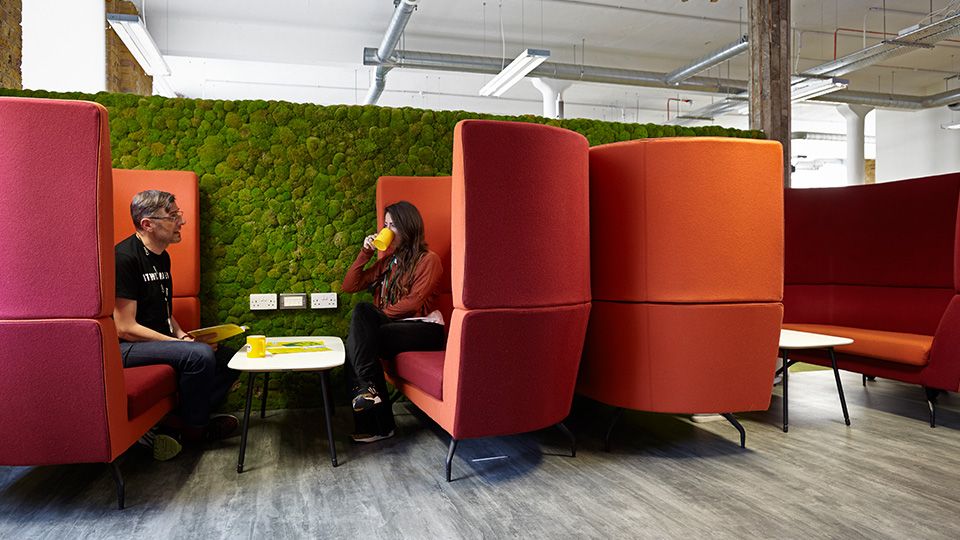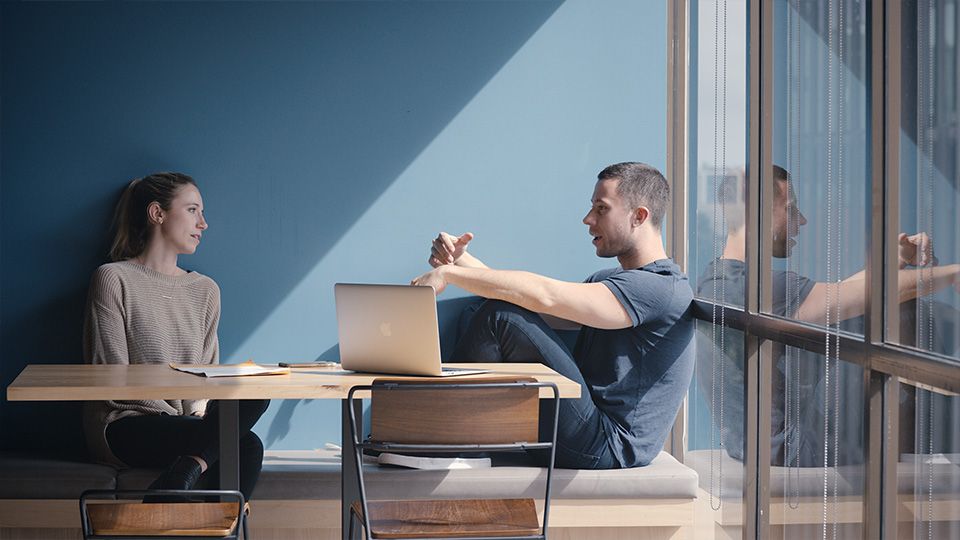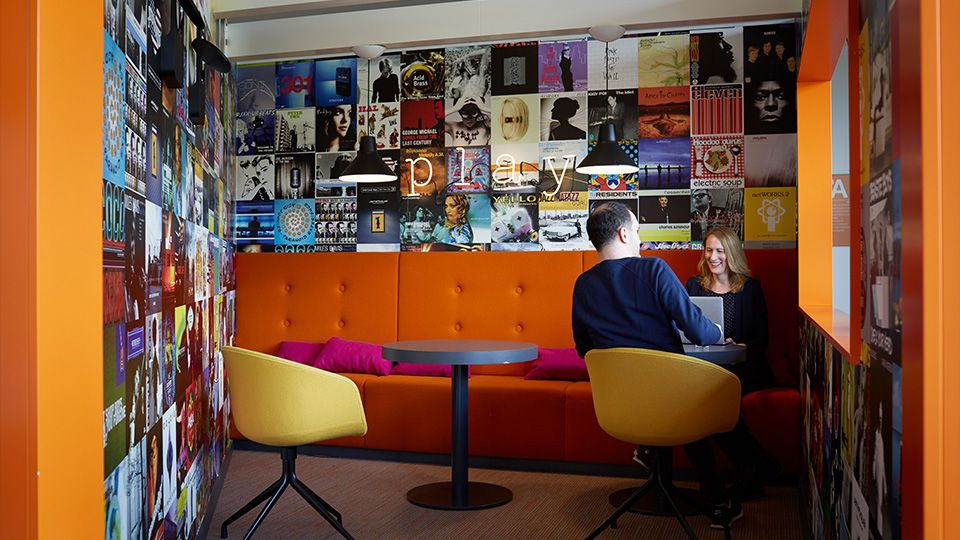To support employee engagement, architects and designers are fashioning visually identifiable collision points within office spaces. These collision points encourage employees to share ideas, collaborate and meet, mirroring the behaviors of their home neighborhoods.
Recent research from Steelcase further examines the correlation between employee engagement and workplace satisfaction. The report notes that workers who are highly satisfied with various aspects of their workplace also demonstrate higher levels of engagement. This correlation between engaged and productive employees is significant. A 2016 Gallup Poll notes that teams with high employee engagement rates are 21 percent more productive.
One company adopting the neighborhood design approach is Airbnb, the global online marketplace for short-term lodging. Stepping into an Airbnb workplace in Tokyo or Dublin, you see a clear set of design principles at play. Workstations are collective spaces with no individual desks, a central multi-use staircase links the space, and visual connections throughout help employees and guests navigate their way around. With ‘in-home’ inspired design touches in each space, Airbnb is pushing the neighborhood approach to connect its team to their customers and the overall brand proposition.
Nature in the neighborhood
Many studies have shown the value of biophilic design to support employee engagement. In our own global study of office workers, respondents noted increased creativity, productivity and wellbeing if they had exposure to natural elements including sunlight and greenery.
E-commerce company Etsy and partner Gensler recently designed a workspace in New York which showcases technology, craft and a regenerative ecosystem inspired by nature. The use of natural materials identifies different neighborhoods, ensuring the employee community can navigate, co-work and use the space to best suit their needs.
Next-gen neighborhoods
The evolution of the neighborhood and its migration from home life to the workplace reflects the changing needs of today’s workforce. Employees want a workplace that inspires them, connects them to nature and offers the feel of a community.
For architects and designers, the neighborhood design principle offers a wealth of possibility to create smart, multi-functional spaces using materials focused on well-being to inspire the workforce of tomorrow.
CBRE Offices, Madrid
Friends of the Earth, UK
Yelp Offices, US
Philips Offices, Germany




One response to “Neighborhoods: The New Workspace”
Actually that is good place ? for doing office work especially this covid19 and I like it